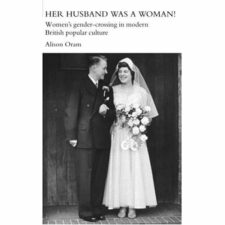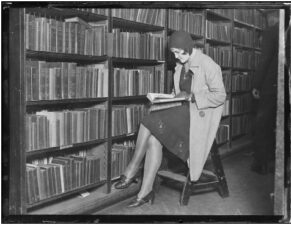In accordance with the contemporary re-evaluation of women’s status during the early-to-mid 1970s, there grew awareness that not only was domestic violence a deeply embedded social problem but one which demanded urgent confrontation. Further to the emergence of Women’s Aid groups in Dundee, Glasgow, Edinburgh and Falkirk, Scottish Women’s Aid was established in 1976. In addition to initiating larger-scale campaigns against domestic violence, this new national network supported the existing regional groups and fostered the development of new ones. This year, Scottish Women’s Aid celebrates its 35th Anniversary and Women’s History Month would seem a particularly appropriate time to celebrate this.
Awareness and analysis of the issue of domestic violence and abuse developed in no small part through the provision of Women’s Aid refuges for women and their children across Scotland. At the same time, that ‘somewhere to go’ was now physically available meant that, on a practical level, urgent accommodation needs were increasingly being met. In its evidence to the 1974/5 Select Committee on Violence in Marriage, the Edinburgh Corporation Social Work Department highlighted the value of the two Women’s Aid centres based in the capital by 1975, stating that: ‘Prior to this, many women were compelled to stay in violent situations, simply because there was no alternative accommodation available’.[1] In addition, this physical provision, the creation of a ‘safe space’, helped lead the issue of violence in marriage to be publicly addressed and examined to an extent not seen since the late nineteenth century.
The significance of the opportunity for women to discuss their experiences of domestic abuse openly and at length, very often for the first time, is a theme which threads through much of the material I have gathered as part of my research into marital breakdown in late twentieth-century Scotland. The extent to which women sought an outlet to simply voice their experience of domestic violence had not necessarily been anticipated by early Women’s Aid groups. However, it was a need that they were determined to meet and one that they have successfully met for thousands of women over the past thirty-five years.
Action by Women’s Aid volunteers at the local level was central to early refuge provision which, although often inadequate by their own admission, provided vital help for innumerable women (and their children) and, in particular, the benefits of mutual support. The significance of such support was explained to the contemporary Select Committee by a Women’s Aid representative who argued: ‘you are not taking [women] out of one isolated situation and putting them into another’.[2] Whilst the service provision for women who have endured domestic abuse has evolved and advanced in innumerable ways, this statement, I would argue, still has relevance and resonance today.
As historical research into domestic violence has shown, many women attempted to hide from their close family and friends the extent and nature of the frequently very serious violence which they experienced within the home. Some felt personally responsible for the success, or otherwise, of their relationship, however abhorrently their partners behaved. The idea that the nature of one’s marital relationship was a thoroughly private matter further inhibited women experiencing domestic violence from speaking out, as the Dobashes’ groundbreaking contemporary research illustrated.[3] Their silence was routinely reinforced by a cultural emphasis on the permanent nature of the marriage relationship (‘the deeply ingrained idea that marriages should be held together at almost any cost’) and related popular notion of ‘the inviolable nature of the family’.[4] Asked about women’s reaction to contemporary institutional attitudes, one woman replied:
I think [women] just took it part and parcel this [abuse within marriage] was happening to them and they didn’t think that anybody had a responsibility to help them. It was a problem that they had to deal wi’ and find a solution in some way, and if they didn’t, they just had to live with it …[5]
It is within this wider institutional and discursive context that I would suggest the significance of the secure physical space constituted by refuge in the 1970s, and therefore the key role played by Women’s Aid during this period, is best understood. Refuge contributed to the opening up of an alternative discursive space which would transform not only the popular understanding of domestic violence but women’s understanding of themselves (including women who may never necessarily have come into contact with Women’s Aid directly).
Crucially, throughout the 1980s, 1990s and into the twenty-first century, this vital work has not only been continued but further developed to best meet women’s needs. In a time of economic stringency and severe funding cuts, it is essential to emphasise just how important such efforts were in the past and still remain today. Whilst this year’s anniversary officially marks the founding of Scottish Women’s Aid in 1976, the continued efforts of Women’s Aid workers and volunteers across Scotland throughout the past thirty-five years are equally worthy of celebration.
Further reading
Dobash, R. E., and Dobash, R., Violence against wives: a case against the patriarchy. London: Open Books (1979)
Report from the Select Committee on Violence in Marriage together with the Proceedings of the Committee, Session 1974-75, Volume 2, Report, Minutes of Evidence and Appendices, HMSO (1975)
Click on the links for more information on domestic violence and help: Scottish Women’s Aid, Women’s Aid and Refuge. Please also consider giving to Women’s Aid and to the local branches of Women’s Aid (find your local branch through the links above). Like many charities, the current economic climate has seen cuts to budgets with a consequent impact on services- your giving can help.
[1] Report from the Select Committee on Violence in Marriage together with the Proceedings of the Committee, Session 1974-75, Volume 2, Report, Minutes of Evidence and Appendices, HMSO (1975), p261
[2] Report from the Select Committee on Violence in Marriage 1974-75, p304
[3] R. E. Dobash and R. Dobash, Violence against wives: a case against the patriarchy. London: Open Books (1979), p166
[4] Ibid, p148 and p161
[5] Oral history interview with A Thomson, 12 October 2010

